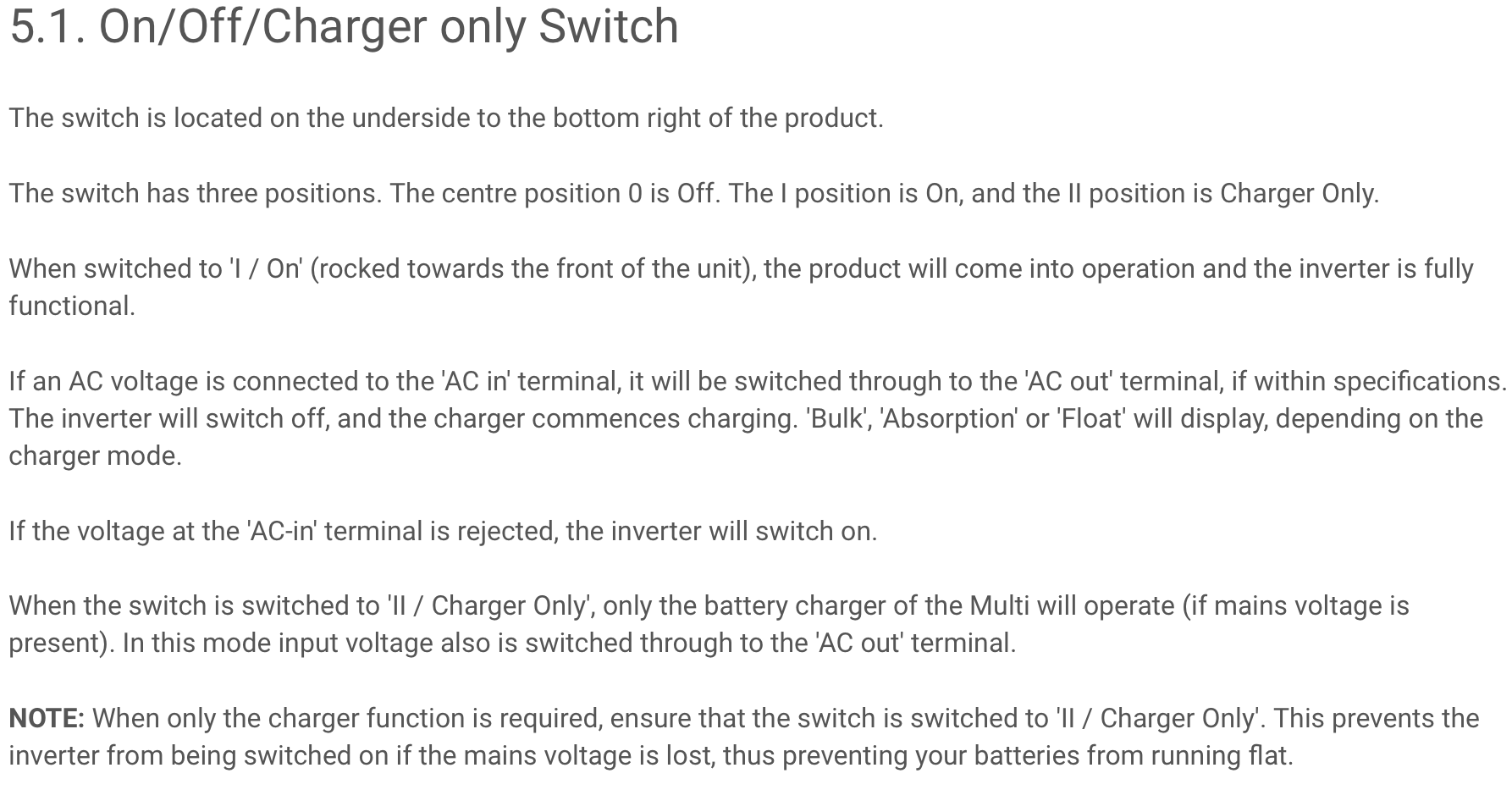The Victron Multi inverter is supposed to lift the internal neutral to ground if connected to the grid however I see from the diagram that all the PE are still connected to the inverter chassis which in turn, being connected to the Grounding bus-bar, would still effectively bond the grid earth to the PV grounding electrode (underground rod)
I want to be able to potentially use the Multi’s charger but I do not want the grid grounding to be linked to my PV ground.
1) Is there a way to do so? Or should I simply lift the grid ground when charging? I expect that would be wrong if using the grid for loads but I would not be, subject to the next question:
2) Can the Multi II charge the battery bank without automatically switching or passing through the grid to my loads?
In other words, can the Multiplus charge and invert simultaneously?
From the instructions below it doesn't seem so but I'm just wondering

